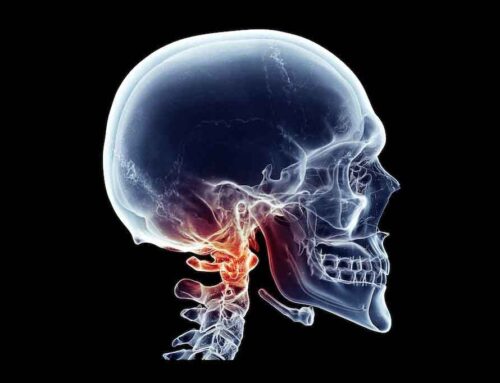How To Find A Good Chiropractor Near MeChiropractic care is often an indispensable part of a pain management plan. A chiropractor can work with your primary care physician (PCP) or pain management doctor, to offer you the best shot at getting better. The chiropractor typically does this by addressing any structural misalignments throughout the spine, which then leads to a stronger and healthier body –free from interference to the nervous system. One of the most daunting aspects of starting chiropractic care is locating a well-qualified chiropractor near you. Simply going online to find a list of names doesn’t help you to know if the chiropractor you choose is going to work for you. There are, however, a few things you can do when asking “how to find a chiropractor near me?” Chiropractors are an integral part of a properly laid out chronic pain management plan. Chiropractic care is often referred to as a complementary treatment, and since chiropractic doesn’t involve the use of drugs, it complements the care given by pain docs quite well! The best chiropractors can help you on your road to recovery by:•Utilizing a non-intrusive technique•Utilizing diet and exercise •Utilizing the most advanced imaging technology available (CBCT)•Proper analysis of the images •Properly explaining your objective indicators and how it relates to your symptoms Chiropractic care works quite well, and we’ve seen patients with Vertigo, Migraines, Meniere’s, Trigeminal Neuralgia and Headaches do exceptionally well. With a little bit of legwork before care, you can increase your odds of finding a chiropractor that’s great for you. Here are five steps to get started:Step 1: Recognize what a great chiropractor has to offerChiropractors use a variety of different techniques to realign the spine and some even concentrate on the structural realignment of the craniocervical junction (where the head meets the neck). Here’s a short list of conditions that have responded well to chiropractic care:
There are some chiropractors that believe chiropractic care is a cure-all for any health problem and there are those who are committed to working with all of your doctors as part of a comprehensive treatment plan. When looking for a chiropractor nearby, it is important to decide which type of chiropractor is right for you. Often times, chiropractors will talk about their practice focus on their websites along with their personal thoughts on care. You can and should use their website to glean clues as to weather or not the doctor is a good fit.
•Migraines•Allergies•Arm/Shoulder Pain•Low Back Pain•Sciatica•Bed Wetting•High Blood Pressure•Ear Infections•Constipation•Cerebral Palsy•Child Development Problems•Indigestion•Knee/Leg Pain•Neck Pain•Whiplash•Tourette Syndrome•TMJ Issues•Insomnia•Multiple Sclerosis•Neuralgia•Scoliosis•Sinus Issues•Trigeminal Neuralgia•Meniere’s Disease•Bell’s Palsy•Vertigo•Spine Alignment
Step 2: Ask for a referral for a chiropractor near me Chances are, you have a friend, family member or coworker who already has a chiropractor they love. Simply ask them for a referral and whether or not they would be a good fit for you. All the degrees and online reviews in the world mean nothing if the doctor isn’t a good fit for you. It’s important to keep in mind what type of doc you typically agree with. Whether you like a warm, caring doctor or a capable but business-like doctor, a recommendation from a family member or friend may be able to help.If you’re part of a support group (i.e. Meniere’s Support Group), this can be a great place to ask for recommendations from people who may have the same health concerns as you. Step 3: Know the medical requirements of a chiropractor in the United StatesAll 50 states require that a chiropractor complete a Doctor of Chiropractic degree after completing their undergraduate work. All four parts of the national board exams must be passed with a certain minimum score. Most states have their own exam that must be passed once the national boards are completed. In total, the curriculum includes a minimum of 4,200 hours of classroom, lab and clinical applications. Most states require between 18 and 24 hours of annual continuing education. This is where a chiropractor can explore certain specialties within chiropractic, such as: Pediatrics, Upper Cervical Care, Motor Vehicle Accidents and Whiplash etc. Some chiropractors will include additional information about their specialty or focus, on their website. This can be quite helpful when trying to find a chiropractor that fits your needs and goals.Step 4: Visit a credible websiteToday, everything is just a click away. You can get a lot of important information about your condition and doctor online. At the same time, there is a lot of dubious and misleading information out there. Once you have a doctor in mind, take advantage of the following sites:
- Dr. Drew Hall
- Dr. Alex Bello
- Dr. Thomas Forest
- Dr. John Hilpisch
- My Back On Track
- Dr. Dennis Campbell
- Dr. Ray Drury
- Dr. Thad Vuagniaux
- Dr Nick Tedder
Each site has slightly different information to give you a better picture of your doctor before your first visit. Find the best chiropractor for you by looking for ones who share lots of information and knowledge, whether on their website or on social media.Step 5: Prepare for your visitOnce you find a chiropractor near you that you are comfortable with, it’s important to prepare for the initial visit. Bring any sort of imaging (X-Ray, Cat Scan, MRI) that you’ve had in the past along with the report written by the radiologist. Also, bring a list of all of the medications you are currently taking. A chiropractor doesn’t prescribe drugs but you’d be surprised how many people don’t realize that certain drugs can cause Vertigo, Headaches or Vision problems for instance. The chiropractor will gather a complete medical history along with any previous injuries or underlying medical conditions. If your imaging is quite old or your condition has changed since your last MRI or X-ray was taken, your chiropractor may order new imaging such as the Cone-Beam Computed Tomography (CBCT) that we utilize in our practice. Once your history is gathered, the chiropractor will most likely run you through a physical exam and perhaps a series of objective indicators. In our practice, once you decide to pursue care, a CBCT scan is taken, which gives us a 3D rendering of your neck in color. The 3D scan essentially gives us a blueprint of the junction between the head/neck, which means there is no guesswork. Some chiropractors will correct your misalignment the same day and some may have you return the following day for your first correction. In either case, the doctor will have to analyze the 3D scan before your initial correction. After the initial visit is complete, the chiropractor will recommend a schedule of follow-up visits. The number of visits will depend on your current health condition, age, and experience with patients similar to you.



